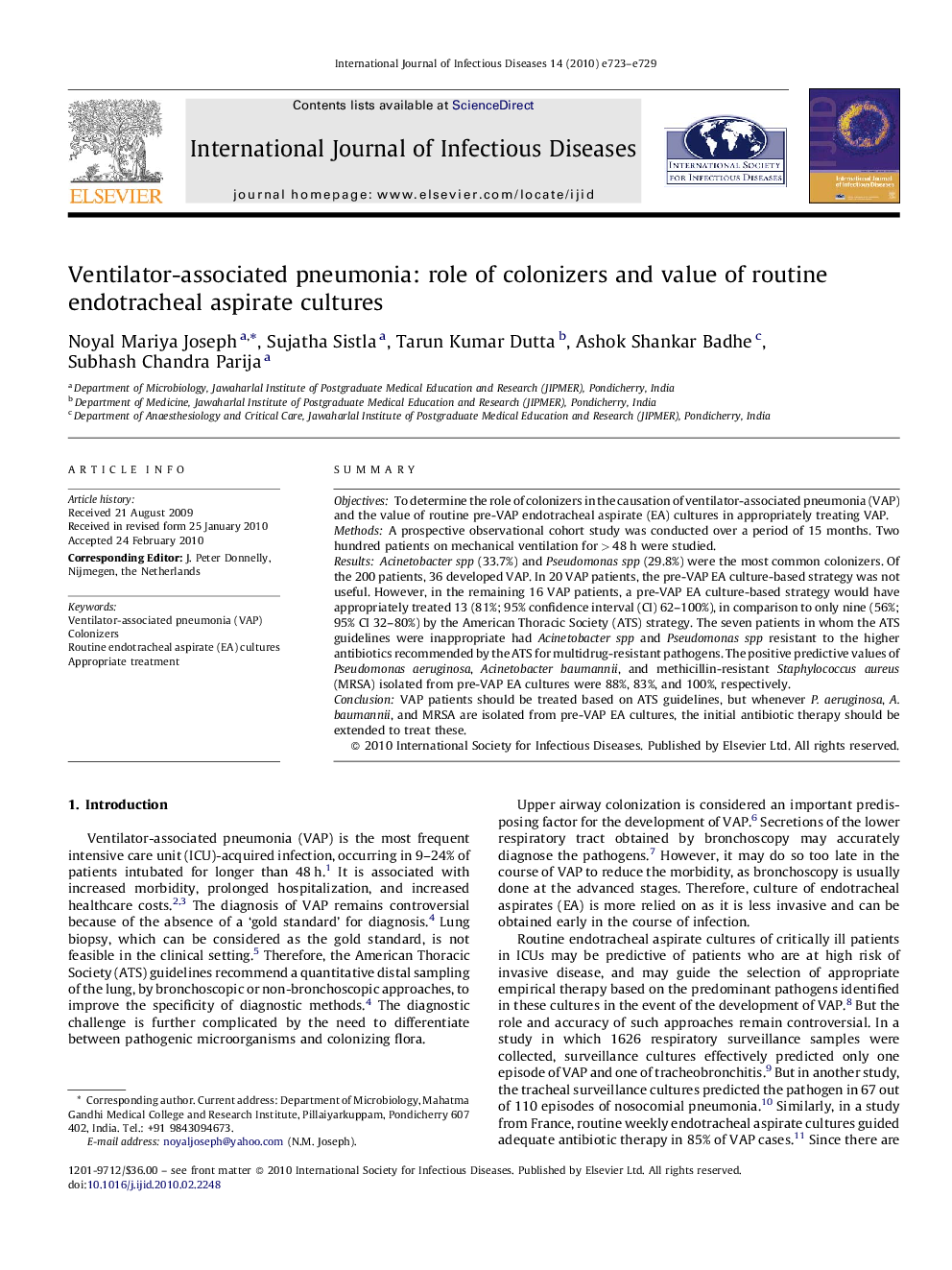| Article ID | Journal | Published Year | Pages | File Type |
|---|---|---|---|---|
| 3363252 | International Journal of Infectious Diseases | 2010 | 7 Pages |
SummaryObjectivesTo determine the role of colonizers in the causation of ventilator-associated pneumonia (VAP) and the value of routine pre-VAP endotracheal aspirate (EA) cultures in appropriately treating VAP.MethodsA prospective observational cohort study was conducted over a period of 15 months. Two hundred patients on mechanical ventilation for > 48 h were studied.ResultsAcinetobacter spp (33.7%) and Pseudomonas spp (29.8%) were the most common colonizers. Of the 200 patients, 36 developed VAP. In 20 VAP patients, the pre-VAP EA culture-based strategy was not useful. However, in the remaining 16 VAP patients, a pre-VAP EA culture-based strategy would have appropriately treated 13 (81%; 95% confidence interval (CI) 62–100%), in comparison to only nine (56%; 95% CI 32–80%) by the American Thoracic Society (ATS) strategy. The seven patients in whom the ATS guidelines were inappropriate had Acinetobacter spp and Pseudomonas spp resistant to the higher antibiotics recommended by the ATS for multidrug-resistant pathogens. The positive predictive values of Pseudomonas aeruginosa, Acinetobacter baumannii, and methicillin-resistant Staphylococcus aureus (MRSA) isolated from pre-VAP EA cultures were 88%, 83%, and 100%, respectively.ConclusionVAP patients should be treated based on ATS guidelines, but whenever P. aeruginosa, A. baumannii, and MRSA are isolated from pre-VAP EA cultures, the initial antibiotic therapy should be extended to treat these.
